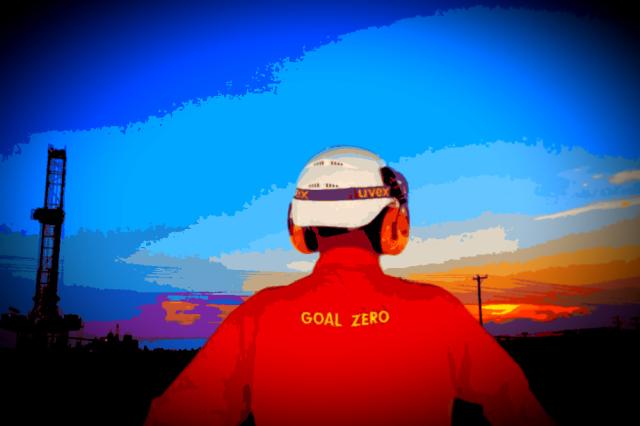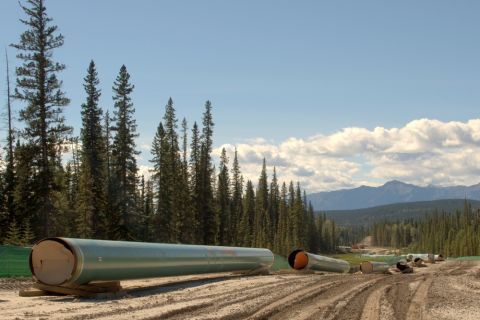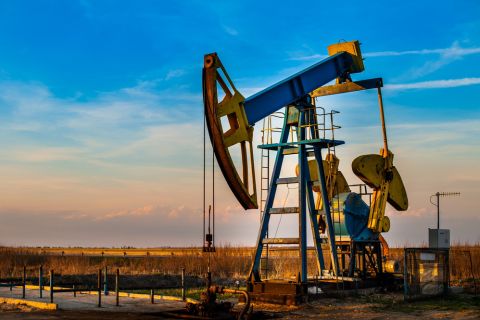
Rystad Energy analysts weigh in on why it might be a smart idea economically and environmentally for Shell to exit the Permian Basin altogether. (Source: Collage by Hart Energy; photos from Royal Dutch Shell Plc and Shutterstock.com)
In 2020 the entire E&P industry saw a sharp decline in their total emission levels due to the pandemic, especially in flaring. Although, Rystad Energy’s Jon Erik Remme warned that “there’s lots to be done” in terms of reducing CO₂ emissions, the levels have remained low even with frac activity picking back up.
“We believe this is actually a structural change, really emphasizing the industry’s commitment to gradually eliminating flaring and that the industry is actually taking on the challenge of developing the resources in a more environmentally responsible manner, and that this effect should not be underestimated in any way,” said Remme, who serves as vice president of upstream research with Rystad, during a virtual roundtable hosted by the research firm on July 21.
Remme was joined on the roundtable—“CO₂, CCS and Carbon Tax: Positioning North America for future energy systems”—by Senior Analyst of Emerging Services Research Lein Mann Hansen and host Amir Zaman, head of America’s business development, to discuss the oil and gas industry’s response to cutting CO₂ emissions as well as potential solutions for the future of fracking.
Zaman mentioned that recently Shell has been considering withdrawing from the Permian Basin altogether. Remme weighed in on how the company might have come to this decision and why it might be a smart idea economically and environmentally for Shell to leave.
“Shell has said that oil production for them peaked [in the Permian] in 2019, and they are expecting gradual reduction of oil production every year,” Remme said. “It’s also going to be quite capital intensive going forward, and we have to see this in light of their greenfield developments, where a significant portion of their resource base for fields under developments or discoveries are expected to have lower breakevens than the Permian, which could also then be coupled with a larger potential for further emission reductions.”
RELATED:
Shell’s Potential Permian Basin Exit Seen as Bellwether for Shale Demand
In the spirit of reducing carbon emissions, companies in the industry have also been talking about the potential of the U.S. government implementing a carbon tax to push energy companies toward being more sustainable. Remme predicts that this conversation contributed to Shell’s potential departure from the Permian Basin.
“This is one of those cases where you have to think holistically around Shell’s portfolio,” Remme said. “Shell’s Permian activity is renowned when it comes to flaring, but it is overall CO₂ intensive as well. We see a carbon tax of $50 or $100 per ton, reducing the overall NPV of Shell’s Permian portfolio, so that is a significant portion that could be hit if [a tax] is to be introduced.”
While energy companies prepare for a potential carbon tax, experts at Rystad have shifted to talking about reusing elements in the field to be more sustainable, namely pipelines. Of reusable pipelines, Zaman said it sounded like it would be a “common theme in this energy transition.”
“Considering all the economics, considering the potential safety issues of wells and poor economics of reusing offshore platforms, reusing pipelines is where the potential lies,” Hansen added. “Not only that, but the cost can be 1% to 10% the cost of building and installing [new] pipelines, so there’s definitely big cost-saving potential. The supply side of CO₂ pipelines might be a little bit limited, but the value of this infrastructure can really go sky high within years.”
In addition to reusing existing infrastructure, Hansen also mentioned how the Alberta Carbon Trunk Line in Canada is used to store CO₂. The world’s largest pipeline compresses and stores up to 14.6 MMtons of CO₂ per year, and it serves as a model for other pipelines in the future.
“What is interesting is that they actually built this pipeline with spare capacity for future CO₂ volumes that can be transported through this pipeline,” Hansen said. “There’s all this thinking ahead, not just on this project, but we’re also seeing it in multiple other projects where they take into account spare capacity in wells that are drilled and completed.”
Although carbon capture and storage (CCS) comes at higher economic costs, the government is incentivizing companies to be more environmentally friendly.
“One of the biggest issues today is that there’s too little monetary value to CO₂ emission reductions, and deploying CCS comes at a cost,” Hansen said. “The maturity of new projects today that are being announced luckily are incentivized by different programs, placing a value on the CO₂ reductions. There is a lot more uncertainty around these policies, and more financial support is needed, but I’m sure we’ll get there.”
Recommended Reading
Oil Dips as Demand Outlook Remains Uncertain
2024-02-20 - Oil prices fell on Feb. 20 with an uncertain outlook for global demand knocking value off crude futures contracts.
Imperial Expects TMX to Tighten Differentials, Raise Heavy Crude Prices
2024-02-06 - Imperial Oil expects the completion of the Trans Mountain Pipeline expansion to tighten WCS and WTI light and heavy oil differentials and boost its access to more lucrative markets in 2024.
What's Affecting Oil Prices This Week? (Feb. 5, 2024)
2024-02-05 - Stratas Advisors says the U.S.’ response (so far) to the recent attack on U.S. troops has been measured without direct confrontation of Iran, which reduces the possibility of oil flows being disrupted.
McKinsey: US Output Hinges on E&P Capital Discipline, Permian Well Trends
2024-02-07 - U.S. oil production reached record levels to close out 2023. But the future of U.S. output hinges on E&P capital discipline and well-productivity trends in the Permian Basin, according to McKinsey & Co.
Veriten’s Arjun Murti: Oil, Gas Prospectors Need to Step Up—Again
2024-02-08 - Arjun Murti, a partner in investment and advisory firm Veriten, says U.S. shale provided 90% of global supply growth—but the industry needs to reinvent itself, again.




